Farshad Babaeijandaghi
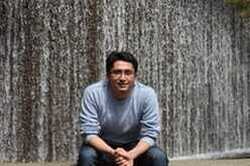
Name: Farshad Babaeijandaghi
Birthplace: Tehran, Iran
Nationality: Iranian - Canadian
Previous or Current Education: Doctor of Medicine: 2001-2009
Graduate student: 2013-2021
Farshad has left the Rossi Lab in January 2023, as he was successfully recruited by Altos Labs, San Diego as a Scientists II
Research Summary: Dissecting the role of innate immunity in muscle regeneration and fibrosis.
Personal Summary: I got my doctoral degree in Medicine from Tehran University of Medical Sciences, Tehran, Iran, in 2009. Then, I started my research career at Stem Cell Technology Research Center, Tehran, Iran as a postdoctoral fellow. I joined the Rossi lab in January 2013 as a graduate student. I defended my thesis in Aug 2021 and I am currently working as a postdoctoral fellow. Outside work, I enjoy biking, hiking, and socializing with friends.
Selected Publications:
1. Babaeijandaghi F, Paiero A, Long R, Tung LW, Smith SP, Cheng R, Smandych J, Kajabadi N, Chang CK, Ghassemi A, Kennedy WDM, Soliman H, Schutz PW, Rossi FMV. TNFα and IFNγ cooperate for efficient pro- to anti-inflammatory transition of macrophages during muscle regeneration. Proc Natl Acad Sci U S A. 2022
2. Babaeijandaghi F, Cheng R, Kajabadi N, Soliman H, Chang CK, Smandych J, Tung LW, Long R, Ghassemi A, Rossi FMV. Metabolic reprogramming of skeletal muscle by resident macrophages points to CSF1R inhibitors as muscular dystrophy therapeutics. Sci Transl Med. 2022 Jun 29;14(651):eabg7504. doi: 10.1126/scitranslmed.abg7504. Epub 2022 Jun 29. PubMed PMID: 35767650.
select
3. Smaila BD, Holland SD, Babaeijandaghi F, Henderson HG, Rossi FMV, Ramer MS. Systemic hypoxia mimicry enhances axonal regeneration and functional recovery following peripheral nerve injury. Exp Neurol. 2020 Dec;334:113436. doi: 10.1016/j.expneurol.2020.113436. Epub 2020 Aug 16. PubMed PMID: 32814068.
select
4. Pisconti A, Banks GB, Babaeijandaghi F, Betta ND, Rossi FM, Chamberlain JS, Olwin BB. Loss of niche-satellite cell interactions in syndecan-3 null mice alters muscle progenitor cell homeostasis improving muscle regeneration. Skelet Muscle. 2016;6:34. doi: 10.1186/s13395-016-0104-8. eCollection 2016. PubMed PMID: 27757223; PubMed Central PMCID: PMC5064903.
select
5. Lemos DR, Babaeijandaghi F, Low M, Chang CK, Lee ST, Fiore D, Zhang RH, Natarajan A, Nedospasov SA, Rossi FM. Nilotinib reduces muscle fibrosis in chronic muscle injury by promoting TNF-mediated apoptosis of fibro/adipogenic progenitors. Nat Med. 2015 Jul;21(7):786-94. doi: 10.1038/nm.3869. Epub 2015 Jun 8. PubMed PMID: 26053624.
select
6. Mortazavi H, Babaeijandaghi F, Akbarzadeh M, Rezaei N, Amirzargar AA, Daneshpazhooh M, Jalali A, Hallaji Z. The influence of systemic therapy on the serum levels of IL-6 and IL-8 in pemphigus vulgaris. J Eur Acad Dermatol Venereol. 2013 Mar;27(3):387-90. doi: 10.1111/j.1468-3083.2011.04319.x. Epub 2011 Nov 2. PubMed PMID: 22044642.
select
7. Ahmadbeigi N, Soleimani M, Babaeijandaghi F, Mortazavi Y, Gheisari Y, Vasei M, Azadmanesh K, Rostami S, Shafiee A, Nardi NB. The aggregate nature of human mesenchymal stromal cells in native bone marrow. Cytotherapy. 2012 Sep;14(8):917-24. doi: 10.3109/14653249.2012.689426. Epub 2012 Jun 11. PubMed PMID: 22687188.
select
8. Shabani I, Haddadi-Asl V, Soleimani M, Seyedjafari E, Babaeijandaghi F, Ahmadbeigi N. Enhanced infiltration and biomineralization of stem cells on collagen-grafted three-dimensional nanofibers. Tissue Eng Part A. 2011 May;17(9-10):1209-18. doi: 10.1089/ten.TEA.2010.0356. Epub 2011 Jan 26. PubMed PMID: 21143044.
select
9. Babaeijandaghi F, Shabani I, Seyedjafari E, Naraghi ZS, Vasei M, Haddadi-Asl V, Hesari KK, Soleimani M. Accelerated epidermal regeneration and improved dermal reconstruction achieved by polyethersulfone nanofibers. Tissue Eng Part A. 2010 Nov;16(11):3527-36. doi: 10.1089/ten.TEA.2009.0829. Epub 2010 Aug 30. PubMed PMID: 20624004.
Contact: [email protected]
Birthplace: Tehran, Iran
Nationality: Iranian - Canadian
Previous or Current Education: Doctor of Medicine: 2001-2009
Graduate student: 2013-2021
Farshad has left the Rossi Lab in January 2023, as he was successfully recruited by Altos Labs, San Diego as a Scientists II
Research Summary: Dissecting the role of innate immunity in muscle regeneration and fibrosis.
Personal Summary: I got my doctoral degree in Medicine from Tehran University of Medical Sciences, Tehran, Iran, in 2009. Then, I started my research career at Stem Cell Technology Research Center, Tehran, Iran as a postdoctoral fellow. I joined the Rossi lab in January 2013 as a graduate student. I defended my thesis in Aug 2021 and I am currently working as a postdoctoral fellow. Outside work, I enjoy biking, hiking, and socializing with friends.
Selected Publications:
1. Babaeijandaghi F, Paiero A, Long R, Tung LW, Smith SP, Cheng R, Smandych J, Kajabadi N, Chang CK, Ghassemi A, Kennedy WDM, Soliman H, Schutz PW, Rossi FMV. TNFα and IFNγ cooperate for efficient pro- to anti-inflammatory transition of macrophages during muscle regeneration. Proc Natl Acad Sci U S A. 2022
2. Babaeijandaghi F, Cheng R, Kajabadi N, Soliman H, Chang CK, Smandych J, Tung LW, Long R, Ghassemi A, Rossi FMV. Metabolic reprogramming of skeletal muscle by resident macrophages points to CSF1R inhibitors as muscular dystrophy therapeutics. Sci Transl Med. 2022 Jun 29;14(651):eabg7504. doi: 10.1126/scitranslmed.abg7504. Epub 2022 Jun 29. PubMed PMID: 35767650.
select
3. Smaila BD, Holland SD, Babaeijandaghi F, Henderson HG, Rossi FMV, Ramer MS. Systemic hypoxia mimicry enhances axonal regeneration and functional recovery following peripheral nerve injury. Exp Neurol. 2020 Dec;334:113436. doi: 10.1016/j.expneurol.2020.113436. Epub 2020 Aug 16. PubMed PMID: 32814068.
select
4. Pisconti A, Banks GB, Babaeijandaghi F, Betta ND, Rossi FM, Chamberlain JS, Olwin BB. Loss of niche-satellite cell interactions in syndecan-3 null mice alters muscle progenitor cell homeostasis improving muscle regeneration. Skelet Muscle. 2016;6:34. doi: 10.1186/s13395-016-0104-8. eCollection 2016. PubMed PMID: 27757223; PubMed Central PMCID: PMC5064903.
select
5. Lemos DR, Babaeijandaghi F, Low M, Chang CK, Lee ST, Fiore D, Zhang RH, Natarajan A, Nedospasov SA, Rossi FM. Nilotinib reduces muscle fibrosis in chronic muscle injury by promoting TNF-mediated apoptosis of fibro/adipogenic progenitors. Nat Med. 2015 Jul;21(7):786-94. doi: 10.1038/nm.3869. Epub 2015 Jun 8. PubMed PMID: 26053624.
select
6. Mortazavi H, Babaeijandaghi F, Akbarzadeh M, Rezaei N, Amirzargar AA, Daneshpazhooh M, Jalali A, Hallaji Z. The influence of systemic therapy on the serum levels of IL-6 and IL-8 in pemphigus vulgaris. J Eur Acad Dermatol Venereol. 2013 Mar;27(3):387-90. doi: 10.1111/j.1468-3083.2011.04319.x. Epub 2011 Nov 2. PubMed PMID: 22044642.
select
7. Ahmadbeigi N, Soleimani M, Babaeijandaghi F, Mortazavi Y, Gheisari Y, Vasei M, Azadmanesh K, Rostami S, Shafiee A, Nardi NB. The aggregate nature of human mesenchymal stromal cells in native bone marrow. Cytotherapy. 2012 Sep;14(8):917-24. doi: 10.3109/14653249.2012.689426. Epub 2012 Jun 11. PubMed PMID: 22687188.
select
8. Shabani I, Haddadi-Asl V, Soleimani M, Seyedjafari E, Babaeijandaghi F, Ahmadbeigi N. Enhanced infiltration and biomineralization of stem cells on collagen-grafted three-dimensional nanofibers. Tissue Eng Part A. 2011 May;17(9-10):1209-18. doi: 10.1089/ten.TEA.2010.0356. Epub 2011 Jan 26. PubMed PMID: 21143044.
select
9. Babaeijandaghi F, Shabani I, Seyedjafari E, Naraghi ZS, Vasei M, Haddadi-Asl V, Hesari KK, Soleimani M. Accelerated epidermal regeneration and improved dermal reconstruction achieved by polyethersulfone nanofibers. Tissue Eng Part A. 2010 Nov;16(11):3527-36. doi: 10.1089/ten.TEA.2009.0829. Epub 2010 Aug 30. PubMed PMID: 20624004.
Contact: [email protected]
Dr. Hesham Soliman
|
PhD: Cardiovascular Pharmacology
Master’s degree: Pharmacology Bachelor’s degree: Pharmaceutical Sciences Current Position: Project summary Hesham is interested in studying the role of cardiac-resident multipotent mesenchymal stromal cells (also called fibro-adipogenic progenitors; FAPs) in the formation of fibrofatty lesions that are characteristic of a disease called arrhythmogenic cardiomyopathy (AC). Arrhythmogenic cardiomyopathy is an inherited cardiac disease associated with fatal ventricular arrhythmias and sudden cardiac death. It occurs in about 1/5000 people and is characterized by progressive myocardial death associated with replacement with fibrofatty connective tissue. Mutations in the desmosomal proteins plakoglobin, desmoplakin, plakophilin-2, desmoglein-2 and desmocollin-2 are highly implicated in AC pathophysiology. This project will involve the utilization of a combination of cell and molecular biology as well as functional cardiology techniques to highlight the role of FAPs in murine models of AC. Additionally, Hesham will investigate whether pharmacologic modulation of the proliferation and differentiation of this cell population will have important consequences on cardiac function. Personal Summary Following completion of his Bachelor’s degree in Pharmaceutical Sciences at Alexandria University in Egypt, Hesham pursued graduate studies in the field of pharmacology. In his Master’s thesis, he studied drug classes that possess novel mechanisms of anti-ulcer and cytoprotective activity. Following his passion for biomedical research, Hesham traveled to Vancouver, Canada to join the PhD program of the Faculty of Pharmaceutical Sciences at the University of British Columbia where he investigated the role of the RhoA-Rho kinase (ROCK) pathway in diabetic cardiomyopathy. Afterwards, in his first postdoctoral fellowship, Hesham continued to work on ROCK and showed that over-activation of ROCK2 is implicated in obesity-induced whole body insulin resistance and cardiac dysfunction. In January 2015, Hesham joined the Rossi lab at the University of British Columbia as a postdoctoral research fellow, still with a focus on the heart, but from a very different perspective. Hesham has been the recipient of a number of merit-based awards and scholarships, including the Canadian Diabetes Association doctoral fellowship. Hesham left the Rossi Lab in the summer 2021. He is now Lead Research Scientist in tissue engineering at Aspect Biosystems. Selected Publications
Rossi FM (2020). Pathogenic potential of Hic-1 expressing cardiac stromal progenitors. Cell Stem Cell; S1934-5909(19)30526-0.
doi:10.1016/j.matbio.2020.05.003
doi:10.1016/j.ijcard.2019.10.017.
ahead of print, 2020 May 20]. Journal of Cell Science; 2020;jcs.242297. doi:10.1242/jcs.242297.
Zaph C, Rando TA, Rossi FM (2018). Inhibition of methyltransferase Setd7 allows the in vitro expansion of myogenic stem cells with improved therapeutic potential. Cell Stem Cell; Feb 1;22(2):177-190.
diets. J Biol Chem; 18; 290(38):23371-84
|
Dr. Christine Eisner
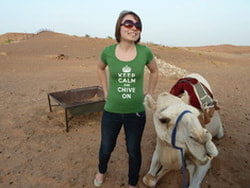
Christine Eisner – PhD
Research Summary: Bone is constantly remodeled through the action of osteoblasts and osteoclasts, which are derived from two distinct lineages. Osteoblasts and osteoclasts also play an important role in the regeneration of bone after an injury or in cases of degenerative bone disorders. While osteoclasts are descended from a hematopoietic lineage, osteoblasts are derived from mesenchymal stem cells. My goal is to understand the role of mesenchymal stem cells in the regeneration of bone to determine their potential as a therapeutic target. Specifically, as most work involving the differentiation of MSCs to osteocytes has been performed in vitro, I am interested in the migration and differentiation process of mesenchymal stem cells to an osteogenic (bone) lineage in vivo.
Personal summary:
Christine completed her Honours Bachelor of Science at the University of Ottawa in Biomedical Sciences. It was while completing her honours project that she discovered her interest in stem cells and regenerative medicine which lead her to the Experimental Medicine program and Fabio Rossi’s lab here at UBC.
Since then...Christine successfully completed her PhD in 2020 and she is now working in Dr. Freda Miller's Lab in Toronto, Canada.
Dr. Elena Groppa

Research summary:
Adult skeletal muscle usually regenerates very efficiently. However, when regeneration fails, for
example due to repeated damage or changes in the inflammatory milieu associated with muscle
disorders, deposition of fibrotic matrix infiltrated with adipocytes takes place and initiates a
vicious circle that prevents functional restoration and interferes with therapeutic
approaches. Hence, the comprehension of the mechanisms by which reparative disorders are
caused appear crucial to apply modifications to the muscle environment for halting or
attenuating the progression of the muscle degeneration, as well as for improving the efficacy of
possible therapies. It is now recognized that muscle regeneration is led by myogenic cells that
directly contribute to tissue repair, but also by non-myogenic cells from other developmental
sources, which act as pivotal accessory players, e.g. revascularization enhances proper muscle
differentiation and function (Mounier et al, 2011). Moreover, non-myogenic mesenchymal
population resident in skeletal muscle in a perivascular position and named fibro/adipogenic
progenitors (FAPs) can proliferate in response to muscle injury to transiently establish an
environment that enhances myogenic differentiation (Joe et al, 2010).
My interest is characterizing the vascular remodeling during skeletal muscle regeneration to
establish correlations between the various phases of angiogenesis and the activity of other
cellular components of the regenerative process, such as FAPs, and dissect the underlying
paracrine mechanisms.
Personal summary:
During my PhD, I acquired extensive experience with myoblast-mediated delivery of angiogenic
genes to skeletal muscle (Banfi et al, 2002). This method is based on the retroviral transduction
of syngeneic myoblasts and provides robust expression of the transgene that is stable over time.
Taking advantage of such cell-based ex vivo approach to gene delivery, we explored the biology
of Vascular Endothelial Growth Factor (VEGF), which is the master regulator of angiogenesis i.e.
the formation of new capillaries from preexisting ones. We previously found that VEGF can
induce either normal capillaries or aberrant angioma-like structures depending strictly on its
dose in the microenvironment around each producing cell in vivo, and not on the total amount
(Ozawa et al, 2004). However, stimulation of pericyte recruitment by coexpression of PDGF-BB
could increase the number of pericytes enrolled to the area of neo-angiogenesis and prevent the
aberrant angiogenic phenotype induced by high VEGF levels (Banfi et al, 2012). In term of
vascular stability, VEGF-sustained delivery of 4 weeks was required to maintain newly induced
normal capillaries upon VEGF-signaling abrogation, whereas aberrant vascular structures never
became VEGF-independent. The aim of my project was to further investigate the cellular and
molecular mechanisms regulating 1) the switch between normal and aberrant angiogenesis and
2) the achievement of vascular stabilization in the presence of increasing VEGF doses, in order to
identify novel and potentially more specific molecular targets to improve both the safety and the
efficacy of VEGF-based strategies for therapeutic angiogenesis (Reginato et al, 2011).
Hobbies:
I love practicing both indoor and outdoor sports, and my favorite one is the (European)
Handball! I love travelling, reading books, cooking, and hanging out with friends and know new
people.
Adult skeletal muscle usually regenerates very efficiently. However, when regeneration fails, for
example due to repeated damage or changes in the inflammatory milieu associated with muscle
disorders, deposition of fibrotic matrix infiltrated with adipocytes takes place and initiates a
vicious circle that prevents functional restoration and interferes with therapeutic
approaches. Hence, the comprehension of the mechanisms by which reparative disorders are
caused appear crucial to apply modifications to the muscle environment for halting or
attenuating the progression of the muscle degeneration, as well as for improving the efficacy of
possible therapies. It is now recognized that muscle regeneration is led by myogenic cells that
directly contribute to tissue repair, but also by non-myogenic cells from other developmental
sources, which act as pivotal accessory players, e.g. revascularization enhances proper muscle
differentiation and function (Mounier et al, 2011). Moreover, non-myogenic mesenchymal
population resident in skeletal muscle in a perivascular position and named fibro/adipogenic
progenitors (FAPs) can proliferate in response to muscle injury to transiently establish an
environment that enhances myogenic differentiation (Joe et al, 2010).
My interest is characterizing the vascular remodeling during skeletal muscle regeneration to
establish correlations between the various phases of angiogenesis and the activity of other
cellular components of the regenerative process, such as FAPs, and dissect the underlying
paracrine mechanisms.
Personal summary:
During my PhD, I acquired extensive experience with myoblast-mediated delivery of angiogenic
genes to skeletal muscle (Banfi et al, 2002). This method is based on the retroviral transduction
of syngeneic myoblasts and provides robust expression of the transgene that is stable over time.
Taking advantage of such cell-based ex vivo approach to gene delivery, we explored the biology
of Vascular Endothelial Growth Factor (VEGF), which is the master regulator of angiogenesis i.e.
the formation of new capillaries from preexisting ones. We previously found that VEGF can
induce either normal capillaries or aberrant angioma-like structures depending strictly on its
dose in the microenvironment around each producing cell in vivo, and not on the total amount
(Ozawa et al, 2004). However, stimulation of pericyte recruitment by coexpression of PDGF-BB
could increase the number of pericytes enrolled to the area of neo-angiogenesis and prevent the
aberrant angiogenic phenotype induced by high VEGF levels (Banfi et al, 2012). In term of
vascular stability, VEGF-sustained delivery of 4 weeks was required to maintain newly induced
normal capillaries upon VEGF-signaling abrogation, whereas aberrant vascular structures never
became VEGF-independent. The aim of my project was to further investigate the cellular and
molecular mechanisms regulating 1) the switch between normal and aberrant angiogenesis and
2) the achievement of vascular stabilization in the presence of increasing VEGF doses, in order to
identify novel and potentially more specific molecular targets to improve both the safety and the
efficacy of VEGF-based strategies for therapeutic angiogenesis (Reginato et al, 2011).
Hobbies:
I love practicing both indoor and outdoor sports, and my favorite one is the (European)
Handball! I love travelling, reading books, cooking, and hanging out with friends and know new
people.
Chuanbin (Ben) Dai

Chuanbin gained his medical training in the Tongji Medical University in China. He started his first step on science with developing HIV vaccine in the Institute of Virology in Beijing. Next, he continued his virological research on gene therapy in the Institut de Biologie Structurale in Grenoble, France, followed by the HIV vaccine development in the University of Washington, Seattle, US.
He joined Rossi’s laboratory in 2020. His roles include investigating of anti-fibrotic approaches to the Duchenne Muscular Dystrophy (DMD) using an animal model and helping with laboratory management.
He loves his families and friends and likes to participate in the community service. Playing badminton and Go a Chinese chess are his main sport hobbies. Whenever possible, he likes to hike with families and friends in BC’s gorgeous forest which is a heavenly gift for Vancouverites.
Chuanbin left the lab to join BC Cancer! Congrats!
He joined Rossi’s laboratory in 2020. His roles include investigating of anti-fibrotic approaches to the Duchenne Muscular Dystrophy (DMD) using an animal model and helping with laboratory management.
He loves his families and friends and likes to participate in the community service. Playing badminton and Go a Chinese chess are his main sport hobbies. Whenever possible, he likes to hike with families and friends in BC’s gorgeous forest which is a heavenly gift for Vancouverites.
Chuanbin left the lab to join BC Cancer! Congrats!
Dr. Marcela low

Previous or Current Education:
- Postdoctoral Research, Currently, Biomedical Research Centre, Vancouver, British Columbia, Canadá.
- Postdoctoral Research, April 2011- September 2012, Institute of Nutrition and Food Technology, University of Chile, Santiago, Chile. “Regulation of zinc metabolism in Enterococcus faecalis and participation of zur transcription factor”.
- PhD in Biological Sciences, Cell and Molecular Biology, March 2011, University of Concepcion, Concepcion, Chile. “Expression, regulation and function of the sodium/vitamin C co-transporter, SVCT2 in skeletal muscle cells”.
- B.Sc. in Biochemistry, January 2005, University of Concepción, Concepción, Chile. “Expression and polarization of the sodium ascorbate cotransporter SVCT1 in renal epithelium”.
Research Summary:
Study the mechanism regulating matrix gene expression in Fibro/adipogenic progenitors (FAPs) in vitro and identify novel compounds that modulate it in vivo.
I’m interested in understand how fibrosis process is regulated in skeletal muscle, specially focusing in a non-myogenic mesenchymal stem cells called Fibro/adipogenic progenitors (FAPs) and study molecular pathways that regulate this process. This might open new opportunities for designing therapeutic strategies for muscle diseases.
Recently, has been demonstrated that TGF-b induced the expression of fibrosis markers in mesenchymal progenitors (FAPs) but not in myogenic cells. This evidence shows that FAPs are the main cells responsible of fibrosis in skeletal muscles and that TGFb is a potent mediator in this effect. Therefore, we hypothesize that FAPs and the TGFb pathway are promising therapeutic targets to inhibit fibrosis in DMD and other fibrotic diseases. However more studies are needed to determine whether if other molecular ways are involved in this process and if TGFb antagonist treatments can improve muscle function impaired by fibrosis.
Personal Summary:
Once I finished my PhD at University of Concepción, where I studied the dynamic of vitamin C transporter (SVCT2) in muscle differentation, I moved to University of Chile where I did a Postdoctoral research about gene expression regulation in bacteria against metal exposure. My interest in the potential of muscle stem cells in regenerative medicine led me to here.
I like to enjoy with family and friends, reading books, practice outdoor activities, like skiing, hiking, biking, running.
Selected Publications:
1. The vitamin C transporter SVCT2 is down-regulated during postnatal development of slow skeletal muscles.
Sandoval D, Ojeda J, Low M, Nualart F, Marcellini S, Osses N, Henriquez JP. Histochem Cell Biol. 139(6):887-94, 2013
http://www.ncbi.nlm.nih.gov/pubmed/23329419
2. Dynamic expression of the sodium-vitamin C co-transporters, SVCT1 and SVCT2, during perinatal kidney development.
Nualart F, Castro T, Low M, Henríquez JP, Oyarce K, Cisternas P, García A, Yáñez AJ, Bertinat R, Montecinos VP, García-Robles MA. Histochem Cell Biol. 139(2):233-47, 2013
http://www.ncbi.nlm.nih.gov/pubmed/22990596
3. Up-regulation of the vitamin C transporter SVCT2 upon differentiation and depolarization of myotubes.
Low M, Sandoval D, Morales B, Nualart F, Henríquez JP. FEBS Lett. 585(2):390-6, 2011.
http://www.ncbi.nlm.nih.gov/pubmed/21176777
4. The ascorbic acid transporter SVCT2 is expressed in slow-twitch skeletal muscle fibres.
Low M, Sandoval D, Avilés E, Pérez F, Nualart F, Henríquez JP. Hitochem cell Biol. 131(5):565-74, 2009
http://www.ncbi.nlm.nih.gov/pubmed/19125272
5. Differential distribution of the Sodium-vitamin C cotransporter-1 along the proximal tubule of the mouse and human kidney.
Castro T, Low M, Salazar K, Montecinos H, Cifuentes M, Yáñez AJ, Slebe JC, Figueroa CD, Reinicke K, de los Angeles García M, Henriquez JP, Nualart F. Kidney Int. 74(10):1278-86, 2008.
http://www.ncbi.nlm.nih.gov/pubmed/18614995
6. Vitamin C uptake and recycling among normal and tumor cells from the central nervous system.
Astuya A, Caprile T, Castro M, Salazar K, García Mde L, Reinicke K, Rodríguez F, Vera JC, Millán C, Ulloa V, Low M, Martínez F, Nualart F. J Neurosci Res. 79(1-2):146-56, 2005.
http://www.ncbi.nlm.nih.gov/pubmed/15578707
Book Chapter:
1. Vitamin C in skeletal muscles: the importance of transport.
Low M, Sandoval D, Nualart F, Henríquez JP. 2011 In: “Vitamin C: Nutrition, Side Effects and Supplements”. Nova Science Publishers, Inc. Chapter 7, pp.259-274.
- Postdoctoral Research, Currently, Biomedical Research Centre, Vancouver, British Columbia, Canadá.
- Postdoctoral Research, April 2011- September 2012, Institute of Nutrition and Food Technology, University of Chile, Santiago, Chile. “Regulation of zinc metabolism in Enterococcus faecalis and participation of zur transcription factor”.
- PhD in Biological Sciences, Cell and Molecular Biology, March 2011, University of Concepcion, Concepcion, Chile. “Expression, regulation and function of the sodium/vitamin C co-transporter, SVCT2 in skeletal muscle cells”.
- B.Sc. in Biochemistry, January 2005, University of Concepción, Concepción, Chile. “Expression and polarization of the sodium ascorbate cotransporter SVCT1 in renal epithelium”.
Research Summary:
Study the mechanism regulating matrix gene expression in Fibro/adipogenic progenitors (FAPs) in vitro and identify novel compounds that modulate it in vivo.
I’m interested in understand how fibrosis process is regulated in skeletal muscle, specially focusing in a non-myogenic mesenchymal stem cells called Fibro/adipogenic progenitors (FAPs) and study molecular pathways that regulate this process. This might open new opportunities for designing therapeutic strategies for muscle diseases.
Recently, has been demonstrated that TGF-b induced the expression of fibrosis markers in mesenchymal progenitors (FAPs) but not in myogenic cells. This evidence shows that FAPs are the main cells responsible of fibrosis in skeletal muscles and that TGFb is a potent mediator in this effect. Therefore, we hypothesize that FAPs and the TGFb pathway are promising therapeutic targets to inhibit fibrosis in DMD and other fibrotic diseases. However more studies are needed to determine whether if other molecular ways are involved in this process and if TGFb antagonist treatments can improve muscle function impaired by fibrosis.
Personal Summary:
Once I finished my PhD at University of Concepción, where I studied the dynamic of vitamin C transporter (SVCT2) in muscle differentation, I moved to University of Chile where I did a Postdoctoral research about gene expression regulation in bacteria against metal exposure. My interest in the potential of muscle stem cells in regenerative medicine led me to here.
I like to enjoy with family and friends, reading books, practice outdoor activities, like skiing, hiking, biking, running.
Selected Publications:
1. The vitamin C transporter SVCT2 is down-regulated during postnatal development of slow skeletal muscles.
Sandoval D, Ojeda J, Low M, Nualart F, Marcellini S, Osses N, Henriquez JP. Histochem Cell Biol. 139(6):887-94, 2013
http://www.ncbi.nlm.nih.gov/pubmed/23329419
2. Dynamic expression of the sodium-vitamin C co-transporters, SVCT1 and SVCT2, during perinatal kidney development.
Nualart F, Castro T, Low M, Henríquez JP, Oyarce K, Cisternas P, García A, Yáñez AJ, Bertinat R, Montecinos VP, García-Robles MA. Histochem Cell Biol. 139(2):233-47, 2013
http://www.ncbi.nlm.nih.gov/pubmed/22990596
3. Up-regulation of the vitamin C transporter SVCT2 upon differentiation and depolarization of myotubes.
Low M, Sandoval D, Morales B, Nualart F, Henríquez JP. FEBS Lett. 585(2):390-6, 2011.
http://www.ncbi.nlm.nih.gov/pubmed/21176777
4. The ascorbic acid transporter SVCT2 is expressed in slow-twitch skeletal muscle fibres.
Low M, Sandoval D, Avilés E, Pérez F, Nualart F, Henríquez JP. Hitochem cell Biol. 131(5):565-74, 2009
http://www.ncbi.nlm.nih.gov/pubmed/19125272
5. Differential distribution of the Sodium-vitamin C cotransporter-1 along the proximal tubule of the mouse and human kidney.
Castro T, Low M, Salazar K, Montecinos H, Cifuentes M, Yáñez AJ, Slebe JC, Figueroa CD, Reinicke K, de los Angeles García M, Henriquez JP, Nualart F. Kidney Int. 74(10):1278-86, 2008.
http://www.ncbi.nlm.nih.gov/pubmed/18614995
6. Vitamin C uptake and recycling among normal and tumor cells from the central nervous system.
Astuya A, Caprile T, Castro M, Salazar K, García Mde L, Reinicke K, Rodríguez F, Vera JC, Millán C, Ulloa V, Low M, Martínez F, Nualart F. J Neurosci Res. 79(1-2):146-56, 2005.
http://www.ncbi.nlm.nih.gov/pubmed/15578707
Book Chapter:
1. Vitamin C in skeletal muscles: the importance of transport.
Low M, Sandoval D, Nualart F, Henríquez JP. 2011 In: “Vitamin C: Nutrition, Side Effects and Supplements”. Nova Science Publishers, Inc. Chapter 7, pp.259-274.
Dr. Coral Ann Lewis
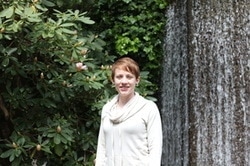
Coral-Ann B. Lewis – Post-doctoral Fellow
Research Summary: A pathological hallmark of experimental autoimmune encephalomyelitis (EAE), a murine model of multiple sclerosis (MS), is the presence of myeloid cell infiltrates at demyelinated lesion sites within the spinal cord. Under homeostatic conditions, the blood-brain barrier (BB) impedes the entry of most blood-borne complex molecules and cells into the central nervous system (CNS) and previous work by others and us has demonstrated that the blood myelomonocytic cells that accumulate within the CNS drive EAE progression. My research aims to characterize the phenotype of infiltrating myeloid cells over the development and progression of EAE and to compare/contrast the activation pattern of these cells to that of microglia, the CNS-resident myeloid cell population. Another facet of my research focuses on describing the changes that occur to the BBB following the induction of EAE and how these changes affect blood myelomonocytic cell infiltration into the CNS.
Personal Summary: I completed my PhD at Simon Fraser University in the Department of Biomedical Physiology and Kinesiology where I investigated the potential of bone marrow-derived cells to function as treatment vehicles for neurodegenerative disease.
Coral has started a new Job at Stem Cell Technology as Project Manager.
Research Summary: A pathological hallmark of experimental autoimmune encephalomyelitis (EAE), a murine model of multiple sclerosis (MS), is the presence of myeloid cell infiltrates at demyelinated lesion sites within the spinal cord. Under homeostatic conditions, the blood-brain barrier (BB) impedes the entry of most blood-borne complex molecules and cells into the central nervous system (CNS) and previous work by others and us has demonstrated that the blood myelomonocytic cells that accumulate within the CNS drive EAE progression. My research aims to characterize the phenotype of infiltrating myeloid cells over the development and progression of EAE and to compare/contrast the activation pattern of these cells to that of microglia, the CNS-resident myeloid cell population. Another facet of my research focuses on describing the changes that occur to the BBB following the induction of EAE and how these changes affect blood myelomonocytic cell infiltration into the CNS.
Personal Summary: I completed my PhD at Simon Fraser University in the Department of Biomedical Physiology and Kinesiology where I investigated the potential of bone marrow-derived cells to function as treatment vehicles for neurodegenerative disease.
Coral has started a new Job at Stem Cell Technology as Project Manager.
Dr. Robert N Judson

Name: Robert N Judson, PhD
Position: Postdoctoral Research Fellow
Birthplace: Bristol, England
Nationality: British
Education:
PhD - 2008-2012 (University of Aberdeen, UK)
MSc - 2007 (University of Aberdeen, UK)
BSc (Hons) - 2004-2007 (University of Birmingham, UK)
Research Summary:
Deciphering the molecular signalling networks that regulate skeletal muscle growth, atrophy and regeneration represents a key goal in musculoskeletal research - not least because of the therapeutic potential these pathways may hold in the treatment of diseases such as muscular dystrophy, sarcopenia and cachexia. My research interests lye in identifying and understanding such pathways and examining their function in relevant physiological and pathophysiological settings in vivo.
Skeletal muscle is an excellent system to model tissue regeneration, thanks to a potent population of resident adult stem cells (satellite cells). Understanding the cell autonomous regulation of satellite cell function and heterogeneity (orchestrated by signalling pathways, chromatin modification or miRNAs) as well as the interactions between these cells, their niche and other muscle-resident progenitor populations is of particular interest. As is understanding the extent to which muscle stem cells contribute to skeletal muscle homeostasis in normal physiological settings outside of disease and models of gross injury (e.g. cardiotoxin).
Personal Summary:
Following completion of undergraduate studies at The University of Birmingham, Robert moved to The University of Aberdeen in 2007 to begin his masters studies in Physiology. Robert's MSc research focused on human population genetics, where he investigated the association between the single nucleotide polymorphism ACTN3 R577X, skeletal muscle function and falls in two large cohorts of elderly women (Judson et al., 2010). In 2008 Robert was awarded a prestigious Oliver Bird Rheumatism Program studentship and completed his PhD studies at the same institute in the Musculoskeletal Research Group under the supervision of Dr Henning Wackerhage and Prof Cosimo de Bari. Here, Robert investigated Hippo signalling and the function of Yes-Associated Protein (Yap) in skeletal muscle, myogenesis and satellite cells where he gained considerable experience and expertise with variety of in vitro (Watt & Judson et al., 2010), ex vivo (Judson et al., 2012) and in vivo (Judson et al., 2013, Owen et al., 2012) models of mammalian tissue growth, differentiation, regeneration and disease. This project involved several collaborative trips to Prof Pete Zammit's lab (King's College London) where Robert became familiar with working with single myofibre cultures and retroviral gene delivery methods ex vivo.
Robert joined the Rossi lab in November 2012 and will be continuing his work investigating the molecular networks that underpin skeletal muscle phenotypes and stem cell function in vivo, with a particular emphasis on understanding the collaborative interactions that occur between multiple progenitor populations during tissue regeneration - a subject of a recent review article (Judson et al., 2013)
Life outside the lab:
Outside of science Robert is an avid sportsman participating in a variety of outdoor activities such as running, skiing, soccer, climbing and hiking.
Robert is now working at Stem Cell Technology as a Research Scientist.
Position: Postdoctoral Research Fellow
Birthplace: Bristol, England
Nationality: British
Education:
PhD - 2008-2012 (University of Aberdeen, UK)
MSc - 2007 (University of Aberdeen, UK)
BSc (Hons) - 2004-2007 (University of Birmingham, UK)
Research Summary:
Deciphering the molecular signalling networks that regulate skeletal muscle growth, atrophy and regeneration represents a key goal in musculoskeletal research - not least because of the therapeutic potential these pathways may hold in the treatment of diseases such as muscular dystrophy, sarcopenia and cachexia. My research interests lye in identifying and understanding such pathways and examining their function in relevant physiological and pathophysiological settings in vivo.
Skeletal muscle is an excellent system to model tissue regeneration, thanks to a potent population of resident adult stem cells (satellite cells). Understanding the cell autonomous regulation of satellite cell function and heterogeneity (orchestrated by signalling pathways, chromatin modification or miRNAs) as well as the interactions between these cells, their niche and other muscle-resident progenitor populations is of particular interest. As is understanding the extent to which muscle stem cells contribute to skeletal muscle homeostasis in normal physiological settings outside of disease and models of gross injury (e.g. cardiotoxin).
Personal Summary:
Following completion of undergraduate studies at The University of Birmingham, Robert moved to The University of Aberdeen in 2007 to begin his masters studies in Physiology. Robert's MSc research focused on human population genetics, where he investigated the association between the single nucleotide polymorphism ACTN3 R577X, skeletal muscle function and falls in two large cohorts of elderly women (Judson et al., 2010). In 2008 Robert was awarded a prestigious Oliver Bird Rheumatism Program studentship and completed his PhD studies at the same institute in the Musculoskeletal Research Group under the supervision of Dr Henning Wackerhage and Prof Cosimo de Bari. Here, Robert investigated Hippo signalling and the function of Yes-Associated Protein (Yap) in skeletal muscle, myogenesis and satellite cells where he gained considerable experience and expertise with variety of in vitro (Watt & Judson et al., 2010), ex vivo (Judson et al., 2012) and in vivo (Judson et al., 2013, Owen et al., 2012) models of mammalian tissue growth, differentiation, regeneration and disease. This project involved several collaborative trips to Prof Pete Zammit's lab (King's College London) where Robert became familiar with working with single myofibre cultures and retroviral gene delivery methods ex vivo.
Robert joined the Rossi lab in November 2012 and will be continuing his work investigating the molecular networks that underpin skeletal muscle phenotypes and stem cell function in vivo, with a particular emphasis on understanding the collaborative interactions that occur between multiple progenitor populations during tissue regeneration - a subject of a recent review article (Judson et al., 2013)
Life outside the lab:
Outside of science Robert is an avid sportsman participating in a variety of outdoor activities such as running, skiing, soccer, climbing and hiking.
Robert is now working at Stem Cell Technology as a Research Scientist.
Dr. Regan Zhang
PhD Candidate
Research Summary: The role of euchromatic histone methyltransferase 2 (G9a) in mesenchymal development. Ehmt2 (euchromatic histone-lysine N-methyltransferase 2), aka. G9a, has been characterised as an epigenetic regulator, and implicated in many cell fate processes. Ehmt2 is potentially an important regulator in the development of mesenchymal tissues. Employing various conditional knockout models in vivo, Regan investigates the importance of this gene in skeletal muscle development, regeneration, craniofacial development, and adipose tissue development. Regan is now working in the Marketing Department at Stem Cell Technology. Dr. Dario R. Lemos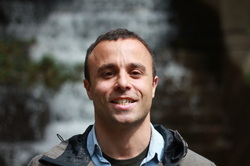
Research Summary:
A shift towards physically undemanding work combined with diets high in carbohydrates and saturated fat has laid the ground for the current obesity epidemic worldwide. In this scenario, the adipocyte, a major regulator of energy balance, plays both a beneficial and a detrimental role in metabolism. My research focuses on the genetic, molecular and physiological cues that drive mesenchymal stem cells (MSCs) into the adipogenic lineage. Specifically, I am interested in the systemic and microenvironmental signals that control the behavior (proliferation, differentiation and death) of adipocyte progenitors/MSCs in vivo. Personal summary: After obtaining my M.Sc. from the University of Buenos Aires I did my doctoral work at the Oregon National Primate Research Center, where I studied regulatory mechanisms of gene expression in the hypothalamus-pituitary-adrenal axis. I love my family and friends, and enjoy traveling, sailing, reading and scoring nice goals. Dario is now Research Associate at Harvard Medical School. Wendy Song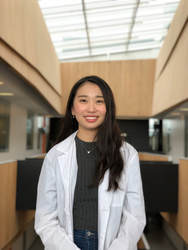
I’m a student in the Doctor of Pharmacy program working on a summer research project with Dr. Marine Theret.
My project aim is to better understand the different pathways of TGFB in degenerative myopathy. I will specifically focus on the crosstalk between inflammation and fibro/adipogenic progenitor (FAPs) by analyzing the inflammatory compartments of different TGFB-signalling deficient myopathic muscles (necrosis vs fibrotic vs regenerating areas). My goal is to one day apply my knowledge of medicine towards interprofessional health sciences research! In my free time, I like to hike, sing karaoke, and play pop songs on the piano. Lisa KamerBio:
I am currently enrolled in the BSc Biotechnology program at the University of Applied Sciences Mannheim, Germany. After discovering my interest in cell biology and the field of regenerative medicine during my studies, I am especially happy to get the chance to get an insight on the research performed at the Rossi Laboratory over the summer. In the lab I am mostly supporting Dr. Marine Theret in understanding the role of the TGF-β signaling pathway in the fate of fibro-adipogenic progenitor cells. Because FAP’s are shown to be adipogenic precursors, I am specifically interested in the role of the TGF β signaling pathway on FAP’s adipogenesis. After getting my degree I am planning on applying for the MSc program Molecular Biosciencesof the University of Heidelberg to later on obtain a Ph.D degree. I am sure that the rich experience that I have been exposed to in the Rossi Lab and in Vancouver will help me achieve my goal of performing innovating research that can be used to better the welfare of people such as patients and non-patients. Personal Summary: One of my greatest passion besides science is music. I play the accordion for over 12 years and I really love playing in orchestras or just for myself, especially the work of Vivaldi and Bach. I also love spending my free time outdoors, exploring Vancouver and all of BC. Going hiking and just appreciate the amazing views from every peak. I love to try and learn new things, that’s why I am currently trying to learn rock climbing during my stay in Vancouver. Shannon Percival Smith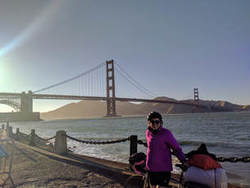
"I am an undergraduate Honours Biology student at UBC, currently doing my thesis in the Rossi Lab. Broadly, I am interested in the role of inflammation in regeneration of skeletal muscle. More specifically, I am interested in the role of natural killer cells in the stem cell niche during regeneration.
My other interests include hiking, camping, and bicycle touring. I recently completed a solo bicycle tour from Vancouver to San Diego, where I slept in my hammock down the beautiful Pacific coast." David Liu
Name: David Liu
Position: Student Research Assistant (2012-2015) Birthplace: Vancouver, BC Current Education: Biomedical Sciences at the University College London Research Summary: David first joined the Rossi Lab in the middle of his grade 10 year. He has been working with Regan and Joey to investigate the role of euchromatic histone-lysine N-methyltransferase 2 (G9a/EHMT2) in both muscle regeneration and acute myeloid leukemia. Personal Summary: Outside of the lab, David has a wide array of interests such as following european football, playing the trumpet, singing, cooking, running, kayaking, and scuba diving. Allison ChiangName: Allison Chiang
Current Education: Bachelor of Science (Combined Major in Science in Life Sciences, Chemistry, and Computer Science) at University of British Columbia Position: Student Research Assistant Nationality: Canadian During second year of undergrad, Allison found a calling in microbiology and laboratory research. Allison is working on myogenic cell preparation, growth, quantification, and preservation under the careful tutelage of Dr. Marine Theret at Rossi Lab. She is also working on image analysis and quantification with various pieces of software. Outside of academia, Allison can be found volunteering at humanitarian organizations at UBC, playing badminton, and kindling her passion in fashion. |
Dr. Ben Paylor
Ben Paylor - PhD Candidate
Research Summary: The cellular definition of a cardiac fibroblast has been expanded in recent years to describe a heterogeneous population of mesenchymal cells within the heart, which are important mediators of repair following injury. The role of recently described cardiac-resident MSC-like cells, termed colony-forming units – fibroblasts (CFU-Fs, identified as CD45-, CD31-, Sca1+, and PDGFRa+) in the modest regenerative response of the injured myocardium has yet to be investigated. Further, in the absence of a robust regenerative response, cardiac CFU-Fs are hypothesized to be the principal cell type involved in the formation of fibrosis within the heart. Elucidation of the cellular and molecular mechanisms regulating cardiac CFU-F’s role in the axis of regeneration versus repair following myocardial injury will lead to novel therapeutic avenues to modulate these processes. Birthplace: Mississauga, Ontario, Canada Nationality: Canadian Previous Education: Honors Bachelor of Medical Sciences - University of Western Ontario, Canada Masters of Philosophy - Maastricht University, The Netherlands Personal Summary: Outside of the lab, Ben is an avid science communicator and holds a variety of different roles in numerous science outreach organizations. He wrote, directed and starred in two short-films about genetics, which were featured in the GeneScreenBC competition in 2010 and 2011. He is also a keen tennis player and pianist. After a short PostDoc at Stanford University, Ben is now an Associate at McKinsey & Company. Dr. Osvaldo Conteras
Name: Osvaldo Contreras
Position: BSc,MSc, PhD student Birthplace: Santiago, Chile Nationality: Chilean Previous or Current Education: Bachelor in Science, Master in Science, PhD Student. Pontificia Universidad Católica de Chile. Research Summary: I studied biology in Chile as an undergraduate student in the lab of Dr. Juan Larrain in Planar Cell Polarity signaling and Developmental Biology. Then, I started my PhD in Enrique Brandan’s Lab with muscle connective tissue progenitor cells and to study their role in muscular dystrophy and muscle tissue fibrosis. I am also interested in cell fate determination and skeletal myogenic differentiation. Recently, I travelled to Vancouver to work at UBC in Fabio Rossi's Lab in a Co-op project involving FAPs (fibro/adipogenic progenitors) biology and the TGF-beta signalling pathway. Personal Summary: I love mountains and oceans so deeply. I spent most of my weekends and free time rock climbing and surfing. I like talking with people, reading, eating (yummy), I love spending time with my family and relatives, biking, whatnot. Everything related to Nature and Traveling is more than welcome, and let say that my mom thinks that I am a crazy human being because I never stop. Selected Publications: Osvaldo Contreras, Maximiliano Villarreal, Enrique Brandan. Nilotinib impairs skeletal myogenesis by increasing myoblast proliferation. Skeletal Muscle. 2018. Camilo Riquelme-Guzman*, Osvaldo Contreras*, Enrique Brandan. Expression of CTGF/CCN2 in response to LPA is stimulated by fibrotic extracellular matrix via the integrin/FAK axis. American Journal of Physiology-Cell Physiology. 2018. *Both authors contributed equally. David Gonzalez, Osvaldo Contreras, Daniela L. Rebolledo, Juan Pablo Espinoza, Brigitte van Zundert, Enrique Brandan. ALS skeletal muscle shows enhanced TGF-β signaling, fibrosis and induction of fibro/adipogenic progenitor markers. PLoS ONE. 2017 12 (5) 1-18. https://doi.org/10.1371/journal.pone.0177649 Osvaldo Contreras, Enrique Brandan. Fibro/adipogenic progenitors safeguard themselves: a novel mechanism to reduce fibrosis is discovered. J. Cell Commun. Signal.2017 (11) 77–78. DOI 10.1007/s12079-016-0372-4 Osvaldo Contreras, Daniela L. Rebolledo, Juan Esteban Oyarzún, Hugo C. Olguín, Enrique Brandan. Connective tissue cells expressing fibro/adipogenic progenitor markers increase under chronic damage: relevance in fibroblast-myofibroblast differentiation and skeletal muscle fibrosis. Cell and Tissue Research. 2016; 364(3):647-60. DOI: 10.1007/s00441-015-2343-0. Jaime Gutiérrez, Cristian Droppelmann, Osvaldo Contreras, Chiaki Takahashi and Enrique Brandan. RECK-mediated β1-integrin regulation by TGFβ1 is critical for wound contraction in mice. PlosOne. 2015; 10 (8). DOI: 10.1371/journal.pone.0135005 Catalina Cofre, María José Acuña, Osvaldo Contreras, María Gabriela Morales, Cecilia Riquelme, Michael Bader, Robson Santos, Claudio Cabello-Verrugio and Enrique Brandan. Transforming growth factor type-binhibits Mas receptor expression in fibroblasts but not in myoblasts or differentiated myotubes; Relevance to fibrosis associated to muscular dystrophies. Biofactors.2015;41 (2), 111–120,DOI: 10.1002/biof.1208 Noelia Escobedo, Osvaldo Contreras, Rosana Muñoz, Marjorie Farías, Héctor Carrasco, Charlotte Hill, Uyen Tran, Oliver Wessely, Andrew Copp and Juan Larraín. Syndecan 4 interacts genetically with Vangl2 to regulate neural tube closure and planar cell polarity. Development.2013; 140, 3008 - 3017. doi:10.1242/dev.091173. Noelia Escobedo, Marjorie Farias, Hector Carrasco, Osvaldo Contreras, Uyen Tran, Oliver Wessely, Andrew Copp, Juan Larrain. Role of Syndecan-4 in mouse development. Developmental Biology. 2011; 356 (1) 176-1 http://dx.doi.org/10.1016/j.ydbio.2011.05.654. Michael Cummings
William Kennedy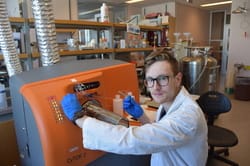
William Kennedy worked in the Rossi Lab for a year as a CYTOF Specialist: ALS, a disease characterized by the rapid degeneration of motor neurons, is characterized by progressive inflammation in the peripheral tissues. There is a increasing need to elucidate the role and timing of this inflammation in ALS patients by surveying peripheral immune responses in the blood. Recently, the CyTOF has been shown as a powerful tool to demonstrate the depth and variety of cell populations, and therefore serves as a unique opportunity to understand disease progression in ALS patients. My role involves spearheading initiatives for Cytof analysis to highlight the power of this unique instrument. Please feel free to contact me for additional information.
Personal Interests: As recent graduate from Queen’s university in Life Sciences, I have dedicated time to developing proficiency with diverse laboratory techniques by working in several national and international labs. Outside of the lab, I am an avid rower with the Burnaby Lake Rowing Club as well as a Marathon Runner. In my spare time I enjoy the mountainous Vancouver landscape through hiking, biking and snowboarding as well as volunteering with community outreach initiatives. William was accepted into Med school in Calgary University. Andrew Wu
"I am a 4th year undergraduate student at UBC majoring in Biology.
During my study abroad in 2014-2015 at UC San Diego, I developed an interest in understanding the role of Fibro-Adipogenic Progenitors (FAPs) and their regulating effects on fibrosis. Currently I am continuing to pursue my interest by assisting Dr. Marcela Low in the Rossi Lab with her work on FAPs. Outside of the lab I am either in the dance studio, fitness center or exploring Vancouver landscapes." Andrew is now pursuing a Master in Xiaoyan Jiang's Lab at BC cancer. |
Marek Ormerod

Educational Summary:
Studying at the University of British Columbia, I am entering my second year studying Honours Biophysics to pursue an understanding of biological systems via physical phenomenon. This drive has led me to the Rossi Lab where I am assisting Dr. Marine Theret in her research involving various signalling pathways critical in fibro/adipogenic progenitor cells (FAP) and macrophage (MP) differentiation, proliferation, and survival while also studying the effects of alterations to these pathways on muscle homeostasis and in chronic muscle damage via transgenic models.
Personal:
I hail from northern British Columbia where no people dare go (or very few at least), therefore of course; I love being outside! My favorite hobbies are hiking and kayaking, but I also enjoy laying back and relaxing with family and friends, be it on the beach or in the woods.
Studying at the University of British Columbia, I am entering my second year studying Honours Biophysics to pursue an understanding of biological systems via physical phenomenon. This drive has led me to the Rossi Lab where I am assisting Dr. Marine Theret in her research involving various signalling pathways critical in fibro/adipogenic progenitor cells (FAP) and macrophage (MP) differentiation, proliferation, and survival while also studying the effects of alterations to these pathways on muscle homeostasis and in chronic muscle damage via transgenic models.
Personal:
I hail from northern British Columbia where no people dare go (or very few at least), therefore of course; I love being outside! My favorite hobbies are hiking and kayaking, but I also enjoy laying back and relaxing with family and friends, be it on the beach or in the woods.
Melina Messing

Research summary:
Amyotrophic lateral sclerosis (ALS) is a devastating neurodegenerative disease with neither a known cause nor an available cure. It has been shown that the up or down regulation of different circulating bone marrow-derived inflammatory cells displaying different surface markers separates patient from control samples and identifies different levels of severity. My research focuses on the use of CyTOF that allows for the detection of up to 38 protein markers per cell, to analyze ALS patient and control blood samples in order to identify inflammatory cell subsets at different stages of disease progression. The establishment of a correlation between cell ‘signatures’ and disease stage will be the basis to establish if changes in the inflammatory profile represents an effect or a cause of ALS. This in turn has the potential to open the doors for either a cheap and fast diagnostic tool or the identification of targets for therapeutic treatments. Personal summary: Originally from Germany, I came to Canada for my Bachelor degree, which I received in 2015 from the University of Victoria in Biology and Computer Science. I moved to Sweden to start my Master degree at Lund University which I am now finishing with a one year project in the Rossi lab. Outside of the lab, I primarily enjoy being a musician. I join the local orchestra as a cellist wherever I live and here I am part of the Vancouver Philharmonic Orchestra where we play a wide range of classical repertoire. Melina successfully eded her master at Lund university in Sweden and she in September 2017 will start her PhD in McNagny Lab. In the meantime she is still eagerly working at the BRC and helping out with the Cytof. Dr. Pretheeban Thavaneetharajah
Post-doctoral Fellow
Research Interests in the Rossi's Lab: Pretheeban is interested in identifying the pro-myogenic signalling pathways regulated by mesenchymal progenitors (MPs) and inflammatory cells in myogenic cells during skeletal muscle regeneration. Activation, proliferation, differentiation and self-renewal of myogenic progenitors (satellite cells) depend on cell autonomous and non-cell autonomous regulatory mechanisms. A type of non-myogenic mesenchymal stem cells, called Fibro/adipogenic progenitors (FAPs) due to their prevalent developmental potential, proliferate upon muscle injury to generate a transient niche that actively regulates myogenic progression by providing both trophic and pro-myogenic signals to satellite cells. His project is to develop a method to investigate the signalling pathways activated in myogenic cells by FAPs and to identify small molecules capable of modulating the effects of FAPs on myogenic cells. Ultimate goal of his study is to identify compounds and therapeutic targets to stimulate regeneration in muscle diseases such as muscular dystrophy and prevent muscle loss in aging. Biographical sketch: Pretheeban completed his undergraduate degree in Veterinary Medicine (B.V.Sc) at University of Peradeniya, Sri Lanka. He worked as a Junior Clinician at the Department of Veterinary Clinical Sciences, University of Peradeniya for a year (Companion animal medicine and surgery, Elephant Tranquilization) and moved to University of British Columbia to follow doctoral study in Reproductive Physiology. His long time interest in Stem Cell Biology and Regenerative Medicine lead him to join Fabio Rossi’s lab for the current postdoctoral training. |
Varoon Mathur
Varoon Mathur Position: Undergraduate Summer Student 2013/2014
Research Interest: In multiple sclerosis and its murine model, experimental autoimmune encephalitis (EAE), increase in vascular permeability leads to extravasation of fibrinogen, which is deposited in the intercellular space. Fibrinogen is a substrate for cell adhesion mediated by CD11b, an integrin-like molecule expressed on the surface of both CNS-resident (microglia) and blood-borne (monocytes) innate immune cells. Blockage of fibrinogen-CD11b interactions by administration of competitor peptides has led to amelioration of EAE disease, and this finding has been interpreted as evidence of a role for this interaction in the activation of microglia. However, our past work (Ajami et al Nature Neuroscience 2011) indicated that microglia play a limited role in disease progression, while monocytes are critical. Using parabiosis-irradiation-separation models unique to our laboratory, I am part of a team that investigates an alternative interpretation of the role of fibrinogen-CD11b interactions. This model allows for the replacement of circulating, but not CNS resident innate immune cells, with transgenically labelled donor cells, and thus for the dynamic assessment of monocyte infiltration in the CNS and their fate during EAE. Specifically, we investigate wether blocking fibrinogen-CD11b interactions will specifically reduce monocytic infiltration rather than microglial activation. I am currently an undergraduate student at Queen's University studying Biochemistry and Life Sciences. Outside of the lab, I love to spend time with family and friends and enjoy breakdancing, basketball, soccer, and producing hip hop music! I am also keen on global health initiatives and community medicine. I joined the Rossi Lab in the summer of 2011 as a high school senior, having mentors such as Dr. Bahareh Ajami and Dr. Leslie So Alfaro. and again in the summer of 2013 as a Centre for Blood Research Undergraduate fellow under the guidance of Dr. Coral Ann Lewis in the Dr Rossi's Lab! Marian Hammoud
I major in Biotechnology at the Berlin Institute of Technology and I have already achieved my Bachelors degree. Now I am doing my Masters degree, therefore, I came to the BRC at UBC to fulfill my obligatory internship of 12 weeks. During my stay I am in charge of helping my supervisor Dr. Hesham Soliman with his projects. I had previously already acquired a lot of lab experience in different fields as I fulfilled one internship in a medical laboratory and another one in a nutritional laboratory. After that I was involved in the iGEM and BIOMOD Berlin Teams and was the team leader for two years. I recommend any student to take part in these or similar (international) competitions as they are very educational. These competitions offered me the first opportunity to be active abroad as part of my studies and, eventually lead me to this internship at the UBC.
|
Elina Kalamkarova
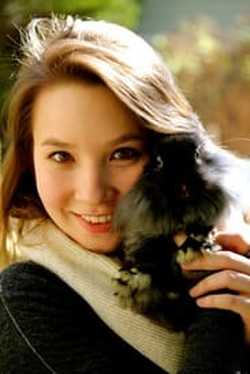
I am an undergraduate student at UBC, majoring in Biology. Throughout the duration of my degree I have taken a keen interest in neuroscience, and have found a passion for up-close work with animals. I am currently helping Dr. Coral-Ann Lewis with her work on comparing patterns of infiltrating myeloid cells with activation patterns of resident microglia in Experimental Autoimmune Encephalomyelitis (EAE),the murine model of Multiple Sclerosis, and mSOD mice, a transgenic mouse model of Amyotropic Lateral Sclerosis.
In my free time I enjoy hiking, photography, and volunteering with animals at the Wildlife Rescue Association and the Vancouver Aquarium.
In my free time I enjoy hiking, photography, and volunteering with animals at the Wildlife Rescue Association and the Vancouver Aquarium.
Jack Yuan

I am a 4th year undergraduate student at UBC pursuing an Honours degree in Cellular, Anatomical and Physiological Sciences within the Faculty of Medicine. My passion for physiological study has brought me into Dr. Rossi's Lab, where I am assisting Dr. Elena Groppa. Our interests are in characterising the mechanisms of vascular remodelling during muscle repair and to elucidate connections between the differing types of cells, with an emphasis on the crosstalk between endothelial cells and fibro-adipogenic progenitors.
Aside from lab activities, I am a hiking enthusiast and enjoy tennis, exercise, cooking and playing guitar.
Jack was accepted at UBC Medical School.
Aside from lab activities, I am a hiking enthusiast and enjoy tennis, exercise, cooking and playing guitar.
Jack was accepted at UBC Medical School.
Christina Lee

Position: Research Assistant/Technician 2012/2013
Birthplace: China
Nationality: Chinese/Canadian
Previous or Current Education: I was educated as a medical doctor, and completed a Master’s degree in Medicine in China. Following this, I worked as a professional medical doctor for a number of years, and had four years of working experience at research organization.
I have a great passion for scientific research. Immigrating to Canada has provided me the opportunity to pursue this aspiration, specifically in the area of stem cell research and their potential applications for cardiac regeneration. Christina left the Rossi's Lab to relocate in China.
Birthplace: China
Nationality: Chinese/Canadian
Previous or Current Education: I was educated as a medical doctor, and completed a Master’s degree in Medicine in China. Following this, I worked as a professional medical doctor for a number of years, and had four years of working experience at research organization.
I have a great passion for scientific research. Immigrating to Canada has provided me the opportunity to pursue this aspiration, specifically in the area of stem cell research and their potential applications for cardiac regeneration. Christina left the Rossi's Lab to relocate in China.
Sunny LeeSunny Lee: Student Research Assistant
Name: Sunny Lee Position: Student Research Assistant, From 2011 to 2014 Birthplace: Kaohsiung, Taiwan Nationality: Canadian Graduated from High school in 2014. Current Education: Bachelor of Honours Health Sciences program at McMaster University (in Hamilton, Ontario) Research Summary: Sunny first began volunteering in the Rossi Lab in the summer of her grade ten year, and is thoroughly enjoying this unique learning experience. She is currently working with Dario on the activity of macrophages and fibro-adipogenic progenitors (FAPs) during skeletal muscle regeneration. Personal Summary: Sunny is an avid participant in both Point Grey’s symphonic band and badminton team. In her free time, she also enjoys reading and story-writing. Claudia Hopkins
Work Summary:
For eight months, Claudia joined the Rossi Lab to illustrate scientific research and findings. These illustrations will be used as a communicative tool for publications, grants, and presentations to enhance the understanding of complex biological systems. Personal Summary: Claudia is currently an undergraduate co-op student at McMaster University studying Chemical Biology. While working as a radio host in 2012, she became passionate about communicating to the public, and decided to channel that energy towards science. Combining her understanding of science with her love of art, Claudia creates scientific illustrations to further people’s interest in biomedical research. Outside of the work environment, Claudia enjoys painting, drawing, attending concerts, and travelling. |
Gloria Loi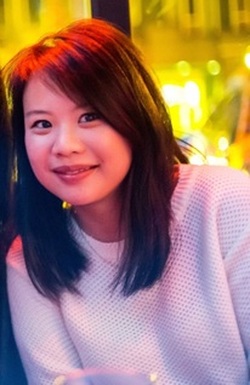
Research Summary:
Gloria worked at the Rossi Lab with Dr. Robert Judson investigating pathways and mechanisms of skeletal muscle growth and regeneration. The projects she is working on focus on increased understanding of interactions, functions, signalling of satellite cells. Personal Summary: Gloria is completing a Biology degree at the University of British of Columbia. As of December 2014, Gloria will have worked for eight months as an undergraduate co-op student at the Rossi Lab. Prior to that, she worked at the Stem Cell Assay Lab at the BC Cancer Research Centre in the Terry Fox Laboratory. When she is not doing lab work, she enjoys reading, swimming, and photography. |
Elianne Abramovich

I am an undergraduate student at Quest University Canada, located in Squamish BC. My program is Liberal Arts and Sciences, but my academic interests are in the life sciences, specifically medicine and genetics.
As a summer student in the Rossi lab, I will be using CyTOF analysis on a panel of surface markers that should identify cellular inflammatory cell types and their precursors, in order to identify cellular subsets that may play a role in asthma and allergies.
In my free time I enjoy kayaking, hiking, and playing the piano.
As a summer student in the Rossi lab, I will be using CyTOF analysis on a panel of surface markers that should identify cellular inflammatory cell types and their precursors, in order to identify cellular subsets that may play a role in asthma and allergies.
In my free time I enjoy kayaking, hiking, and playing the piano.
Zhihao Song Raymond

This is young and passionate science student Raymond. I felt I have an inborn nature to pursue scientific truth in the most critical, skeptical, and impartial way. I am Dr.Low’s student in the Rossi Lab and my research involves delineating the effects of TGFb pathway on the fibrotic process of FAP cells. I am an avid sportsman in leisure times and my philosophy in sports is always trying to challenge myself on the things I could not do before.
Raymond is currently a Student at UBC.
Raymond is currently a Student at UBC.
June Wenjun He

Personal Summary:
I came to Canada when I attended UBC in 2011 as an international student. Living here by myself brought me incredible experience in life and in school. With a major in Nutritional Sciences, the interdisciplinary nature of my studies fascinated me with knowledge from the field of molecular biology, biochemistry, physiology and metabolism. I am hoping to get as much exposure to lab techniques and scientists’ way of critical thinking throughout my education. Currently, I am supervised by Dr. Robert Judson to study the function of the SET7 histone methyltransferase in the context of skeletal muscle cell proliferation, differentiation and its role in protein translation initiation pathway.
Outside the lab, I enjoy reading, working out, rock climbing and golfing with my perfect partner!
I came to Canada when I attended UBC in 2011 as an international student. Living here by myself brought me incredible experience in life and in school. With a major in Nutritional Sciences, the interdisciplinary nature of my studies fascinated me with knowledge from the field of molecular biology, biochemistry, physiology and metabolism. I am hoping to get as much exposure to lab techniques and scientists’ way of critical thinking throughout my education. Currently, I am supervised by Dr. Robert Judson to study the function of the SET7 histone methyltransferase in the context of skeletal muscle cell proliferation, differentiation and its role in protein translation initiation pathway.
Outside the lab, I enjoy reading, working out, rock climbing and golfing with my perfect partner!
Lochlan Fisher
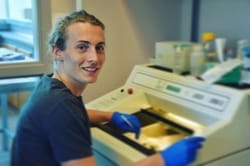
Name: Lochlan Fisher
Position: Summer Student
Nationality: Canadian
Bachelor: Currently Studying Medicine at St Andrews University in Scotland
Research Summary:
Lochlan is studying a population of cells called Fibro-adipogenic Progenitors. He is looking at their contributions in the formation of fibrous and adipose lesions in various disease models, specifically in the heart. The FAPs are characterized by the presence of Platelet Derived Growth Factor Receptor Alpha. Lochlan is gaining experience in various techniques such as cell culture, flow cytometry, immunohistochemistry, PCR, FACS and RNA sequencing under the careful guidance of Hesham Soliman.
Personal Summary: Lochlan grew up in Vancouver and is currently studying Medicine at St Andrews University in Scotland. In the past Lochlan did a mentorship program in the Davies Lab at UBC looking at antibiotic resistance in bacteria as well as an observership in the Emergency Department at Burnaby General Hospital. In his free time he enjoys hanging out with his friends as well as playing soccer and ultimate frisbee.
Position: Summer Student
Nationality: Canadian
Bachelor: Currently Studying Medicine at St Andrews University in Scotland
Research Summary:
Lochlan is studying a population of cells called Fibro-adipogenic Progenitors. He is looking at their contributions in the formation of fibrous and adipose lesions in various disease models, specifically in the heart. The FAPs are characterized by the presence of Platelet Derived Growth Factor Receptor Alpha. Lochlan is gaining experience in various techniques such as cell culture, flow cytometry, immunohistochemistry, PCR, FACS and RNA sequencing under the careful guidance of Hesham Soliman.
Personal Summary: Lochlan grew up in Vancouver and is currently studying Medicine at St Andrews University in Scotland. In the past Lochlan did a mentorship program in the Davies Lab at UBC looking at antibiotic resistance in bacteria as well as an observership in the Emergency Department at Burnaby General Hospital. In his free time he enjoys hanging out with his friends as well as playing soccer and ultimate frisbee.
Katherine Bilan

Duration in Laboratory: 4 months (May-August 2017)
Position in laboratory: Summer Co-op Student
Short Bio: I'm a third year undergraduate Biology student at the University of Victoria, BC, assisting Dr. Elena Groppa this summer through the CBR Summer Studentship Program. I am assisting her with investigating if there is a lineage relationship between pericytes and tissue resident FAPs, if either of these cell types capable of generating the other or if they have a common origin, and what the respective roles of pericytes and FAPs are in tissue regeneration. In my personal time I enjoy travelling, cooking, and spending time with friends.
Position in laboratory: Summer Co-op Student
Short Bio: I'm a third year undergraduate Biology student at the University of Victoria, BC, assisting Dr. Elena Groppa this summer through the CBR Summer Studentship Program. I am assisting her with investigating if there is a lineage relationship between pericytes and tissue resident FAPs, if either of these cell types capable of generating the other or if they have a common origin, and what the respective roles of pericytes and FAPs are in tissue regeneration. In my personal time I enjoy travelling, cooking, and spending time with friends.
Curtis Weng

Name: Curtis Weng
Current Education: Bachelor of Health Sciences (Honours) at McMaster University
Position: Student Research Assistant
Nationality: Canadian
After first year of undergrad, Curtis developed an interest in cellular biology and immunology, thus leading him to apply at the Rossi Lab. Under the supervision of Dr. Elena Groppa, Curtis is helping to establish possible cellular mechanisms that induce or partake in the remodeling of damaged muscle fibers. Mesenchymal cells, such as fibro/adipogenic progenitors (FAPs), are being studied in particular to identify their role in this regenerative process.
In his free time, Curtis can be found enjoying outdoor activities, hanging out with family and friends, or competing in badminton.
Current Education: Bachelor of Health Sciences (Honours) at McMaster University
Position: Student Research Assistant
Nationality: Canadian
After first year of undergrad, Curtis developed an interest in cellular biology and immunology, thus leading him to apply at the Rossi Lab. Under the supervision of Dr. Elena Groppa, Curtis is helping to establish possible cellular mechanisms that induce or partake in the remodeling of damaged muscle fibers. Mesenchymal cells, such as fibro/adipogenic progenitors (FAPs), are being studied in particular to identify their role in this regenerative process.
In his free time, Curtis can be found enjoying outdoor activities, hanging out with family and friends, or competing in badminton.
Nguyen (Joey) Phuong HA

Research Summary:
My current study involves in vivo delivery of siRNA to leukemia cells using liposomes - it is a
collaboration project between Fabio Rossi, Keith Humphries and Pieter Cullis labs. With the
application in inhibiting the expression of all classes of pathological proteins, RNA inteference
has attracted intense interest in the past decade as a potential new class of therapeutics. In our
previous work, we have verified the ability of synthetic liposomes to selectively bind leukemia
cells expressing the CD45 receptor. Following the delivery of siRNA, my goal is to determine if
these siRNA can inhibit the expression of a selective gene (i.e. destabilized GFP). Once it is
demonstrated, further studies of RNAi application will be conducted such as inhibition of the G9a
methytransferase.
Personal Summary:
In 2005, I came to Toronto, Canada as a high school student. After obtaining Bachelor
degree in Biochemistry at Concordia University (Montreal), I moved to Vancouver and started
working as an analyst at the Australian Laboratory Services. From 2012, I joined the Genome
Science and Technology graduate program at UBC.
I love spending time with my family and friends. My hobbies include travelling, karaokeing and
dancing.
Selected Publications:
Charge-assisted hydrogen bond-directed self-assembly of an amphiphillic zwitterionic
quinonemonoimine at the liquid-solid interface; Yuan Fang, Phuong Nguyen, Oleksandr
Ivasenko, Maria Paula Aviles, Eskedar Kebede, Mohammad S. Askari, Xavier Ottenwaelder,
Ulrich Ziener, Olivier Siri and Louis A. Cuccia. Chem. Commun., 2011, 47, 11255-11257
Manjosh Uppal
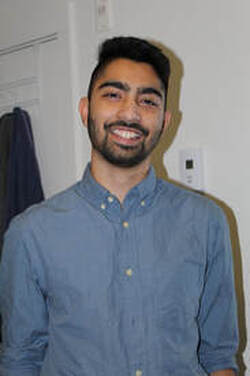
My name is Manjosh Uppal and I am a fourth-year undergraduate student at UBC. I am majoring in Biochemistry and have been given a CBR Summer Scholarship for 2019.
Similar to the rest of the Rossi lab, the focus of my project is on the process of muscle tissue regeneration. More specifically, I work with Dr. Theret on the signalling pathways involved in the response of fibro/adipogenic precursor cells (FAPs) to the inflammatory environment. For instance, TGF-Activated Kinase 1 (TAK1), which is a key signalling transducer in FAPs and may be involved in the regulation of other immune cells.
Outside of the lab, I love to spend my time with friends and family. When I am not cramming for my next biochemistry test, I enjoy playing sports such as hockey, basketball and volleyball.
Similar to the rest of the Rossi lab, the focus of my project is on the process of muscle tissue regeneration. More specifically, I work with Dr. Theret on the signalling pathways involved in the response of fibro/adipogenic precursor cells (FAPs) to the inflammatory environment. For instance, TGF-Activated Kinase 1 (TAK1), which is a key signalling transducer in FAPs and may be involved in the regulation of other immune cells.
Outside of the lab, I love to spend my time with friends and family. When I am not cramming for my next biochemistry test, I enjoy playing sports such as hockey, basketball and volleyball.
Ryan Vander Werff
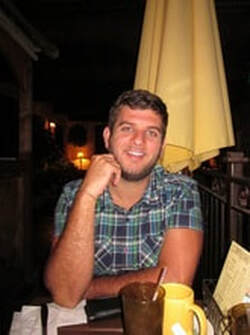
I received both my BSc and MSc from the University of California, San Diego in Molecular and Cellular Biology. During that time, my research focus was on Cancer Biology, looking at the mechanistic site of action for PTHrP’s growth inhibitory effects on Non Small Cell Lung Cancer. From there, I went on to work for private labs focused on therapeutics, drug delivery, and diagnostics. In these fields, I was introduced to the application of technology in the laboratory while working with high throughput screening, laboratory automation, micro-fluidics, analytics, and most recently, next generation sequencing. My most recent position with Sequenom, in La Jolla California, was in a clinical diagnostic laboratory that sequenced fetal DNA through methylation based filtering of maternal blood samples. Here, I was a part of a small group known as the Technology Development Team, which worked on setting up new assays via Illumina`s next generation sequencing, laboratory automation, and any other technologies that were being brought into the lab.
At the Biomedical Research Centre I am applying my knowledge and technical skills for sequencing and lab technology; providing tools for my fellow researchers to further the reach and understanding of high impact discoveries.
Name: Ryan P. Vander Werff, MSc
Position: Research Technician
Birthplace: California, USA
Nationality: American
At the Biomedical Research Centre I am applying my knowledge and technical skills for sequencing and lab technology; providing tools for my fellow researchers to further the reach and understanding of high impact discoveries.
Name: Ryan P. Vander Werff, MSc
Position: Research Technician
Birthplace: California, USA
Nationality: American






